What a gem of a historic coastal town. This was my sister and brother-in-law’s next destination after Daytona, and after my sister’s description of it, we decided to tag along with them for a couple of days.
Anastasia State Park
This is a wonderful park and campground, right at St. Augustine Beach, just a ten-minute drive over the bridge into St. Augustine proper. It has its own long sandy beach, as well as an inlet canal filled with tropical birds, which I would have loved to kayak if the weather had been better.
We arrived here a day ahead of Beth and Don and took advantage of what we knew would be our last warm, sunny day there to go to St. Augustine Beach. This is just a short drive out of the park, but this beach allows pets. So both Bailey and Gypsy got to get out and romp. Gypsy is a brave little cat, intrigued by beach birds. But she was terrified of surfers carrying boards. She must have thought they were people with giant wings.
Florida State Parks are generally booked solid through the winter, and snatching up cancelled reservations is a real skill. For weeks, I checked online for openings at Anastasia. When I saw one spot available on the Friday, I booked it, even though Beth and Don wouldn’t get to St. Augustine until Saturday. Eventually, I was able to nab another site for Saturday. Once we were there, I noticed a very nice site near us that went unclaimed our first night. I checked online repeatedly until it appeared as a cancellation and I was able to grab up a third night. Then I went to the ranger office to get them to swap our second night’s site for the new place, so we would only have to move once.
St. Augustine
I loved this town at first sight. From the barber pole lighthouse, to the lion-guarded drawbridge, to the European-like skyline of turrets and towers. We drove around on that first balmy night, just as the sky was fading to pink and the holiday lights were appearing in palms and treetops and houses everywhere.
The next day we met Beth and Don downtown. The place was jammed with tourists, and it took 45 minutes to find parking places. (It wasn’t till Monday that I realized it was a holiday weekend: MLK Day.) We met up just as the sky let loose and ducked inside the old Ponce de Leon Hotel to get out of the rain. What an amazing place that was. The building is now part of Flagler College and is used as a dorm and classrooms. But it was built by Henry Flagler as an opulent hotel for rich northerners in the 1880s, and he spared no expense. Tours are offered, and I would have enjoyed one, but we were too eager to get out and see what we could of the town.
The rain eased to mist, and we walked all around town till dusk, stopping at a place for BBQ and enjoying the nighttime lights. The crowds were a bit overwhelming, but there was such a festive atmosphere. St. Augustine is geared toward tourists, for sure. But it’s so authentic. The tourist shops are in buildings that are one or two hundred years old. The streets are brick, the houses all old.
We met up again the next day for lunch at Café Alcazar. This fancy little restaurant is in what used to be the “world’s largest indoor swimming pool” and part of the Alcazar Hotel. We sat in what used to be the deep end of the pool, and tried to imagine swimming through the columns and into private little rooms that now housed tiny antique shops. Afterwards we walked through the older residential area, with houses dating back to 1702.
Castillo de San Marcos
Just over the drawbridge, right in downtown St. Augustine, is the fort built by Spaniards in the late 1600s to protect their claim to the area from the French and the English. The walls are made of coquina rock (see Coquina Rock Beach), which was soft enough to deflect cannonballs without crumbling. The fort survived a 50-day attack by the English in 1702 and a 27-day bombardment in 1740, although the city outside the fort was burned to the ground both times. In 1763, the Spaniards ceded Florida to Great Britain in exchange for Cuba, and the Brits held onto the fort through the American Revolution. Florida was again held by the Spanish until 1821, when it became part of the U.S. The Americans used the fort to house Indian prisoners during the Seminole War of 1835-42. Confederate troops occupied it briefly during the Civil War. And it was last used as a military prison during the Spanish-American war.
Our National Park pass got us into this national monument for free (normally $10), and it was quite interesting to take a self-guided tour of the place, seeing old bunk rooms with centuries-old graffiti scratched into the walls, meeting rooms and chapel, even a “necessaries” room that had rows of pit toilets. We could walk up on the ramparts above, examine canons and take in the expansive view. Several times a day, volunteers dressed in Spanish solider uniforms go through an elaborate, drawn-out ceremony of firing a canon into the sea (big bang, no ball).
New Friends
Well, I can’t say “friends,” really, because I doubt we’ll ever see these people again, but we were happy to meet this adventurous couple from Australia who were taking their RV retirement trip to a whole new level. They had a custom-built, “outback-worthy” Isuzu rig that they had shipped from Australia to Hawaii and then to California. They are in the first year of a five year world RV tour. So far they’ve seen a good part of the U.S. (including Alaska) and Canada. They’d spent Christmas in the Keys and were winding their way back west, where they would cross into Mexico and travel south through Central and South America. After that, they’d ship the RV to Africa for further travels. They would go as long as visas would allow.
Penelope and Ian were more than happy to show off their amphibious-looking RV. It’s built for off-road camping with solar panels and two spare tires on the back. The roof raises, like a tent camper, to give an extra three feet of head room. And it has all the usual amenities. Without slides, this RV is much more cramped than what we’re used to, but what it’s missing in size it makes up for in character. And these two stalwart travelers seem to have what it takes to make it work. If you want to read about their progress around the globe, check out their blog at www.travelsintheearwig.wordpress.com.

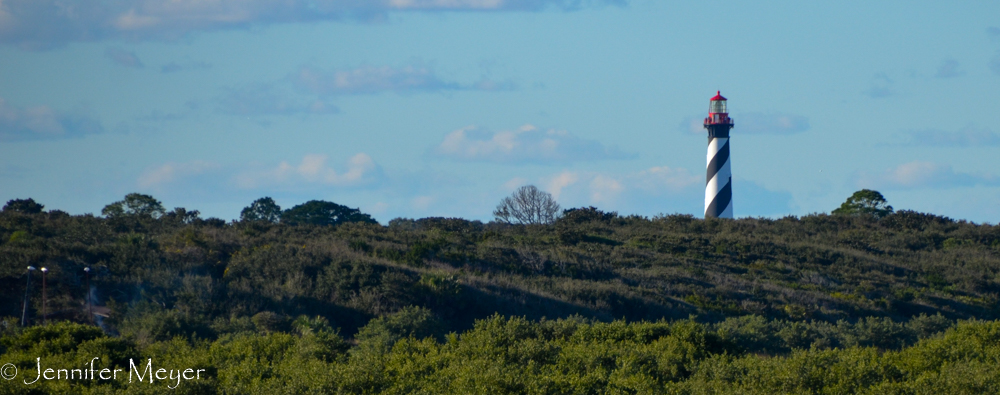
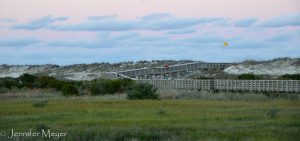
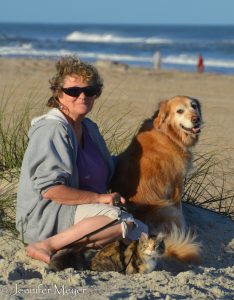
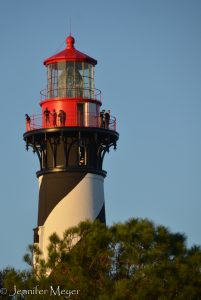
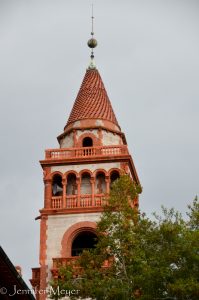
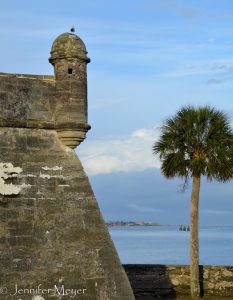
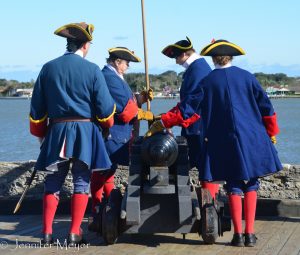
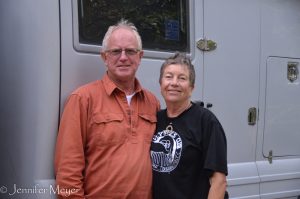
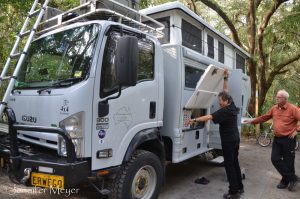
Jennifer and Kate — So nice to have met you at John Prince Park. All the best to you on your travels. – Joe Blanton
I wish we’d had more time to talk, and to meet your wife. I would have loved hearing more about your years with National Geographic! You didn’t leave a card, did you? Can you give me your blog address, or email it to jmeyer@tributewebdesign.com? Enjoy the rest of your stay at that great park, and travel safe home.